Increasing solar activity, waning coronal hole effects
Tuesday, 9 December 2014 18:12 UTC

Solar activity has been low the past few days but we could be in for an uptick thanks to rapidly developing sunspot region 2230. Here at Earth we remain under the influence of coronal hole high speed stream effects, but these effects are now slowly subsiding. The strength of the IMF maxed out at 25nT during the onset of the coronal hole stream and the solar wind speed managed to reach an impressive 800km/s. Gorgeous auroral displays were seen from many high latitude locations including Finland where Salamapaja took this stunning image of an auroral display above the frozen Baltic Sea and the city lights of Oulu.
Increasing solar activity
Solar activity has been low the past few days but we are seeing signs of increasing solar activity. Rapidly developing sunspot region 2230 has been the source of numerous high C-class solar flares today including two C8 events at 08:30 UTC and 10:24 UTC. None of these events are believed to have produced a coronal mass ejection but we should be keeping an eye on this sunspot region as it is close to the solar meridian. A strong solar flare from this group could launch an earth-directed coronal mass ejection. Why is this sunspot region flaring and could we really expect a strong solar flare?
A quick look at sunspot region 2230 shows a sunspot group with a Beta-Gamma-Delta magnetic layout. It has a small delta sunspot among the southern sunspot cluster and spots of opposite polarities close to each other in it's nothern section but those can not be called delta sunspots just yet as they are not really connected with penumbra between the umbra spots. Do note that this sunspot region is constantly moving around and will likely change it's layout in the coming hours but it does look promising at the moment if it continues to develop and gain magnetic complexity. A low-level M-class solar flare can not be excluded based on it's current layout but the chances are not very high just yet.
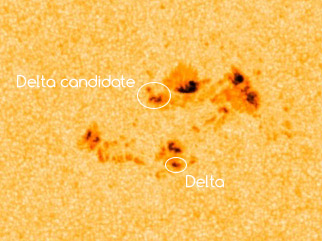
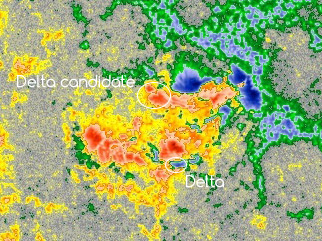
M-class flare probability for the coming 24 hours: 30% chance
X-class flare probability for the coming 24 hours: 1% chance
All the other sunspot regions on the disk are unremarkable and unlikely to produce strong solar flares. Solar activity will likely be low (C-class) in the next 24 hours with an increasing chance for moderate (M-class) activity.
Waning coronal hole effects
Coronal hole high speed stream effects are now waning and only high latitude locations could experience an isolated auroral outbreak. The Kp-index managed to reach 5 (G1 geomagnetic storm conditions) and stunning auroral displays were seen from many high latitude locations over the past few days. Just take a look at this amazing shot by The Aurora Photo Guide : Runólfur Hauksson from Iceland!
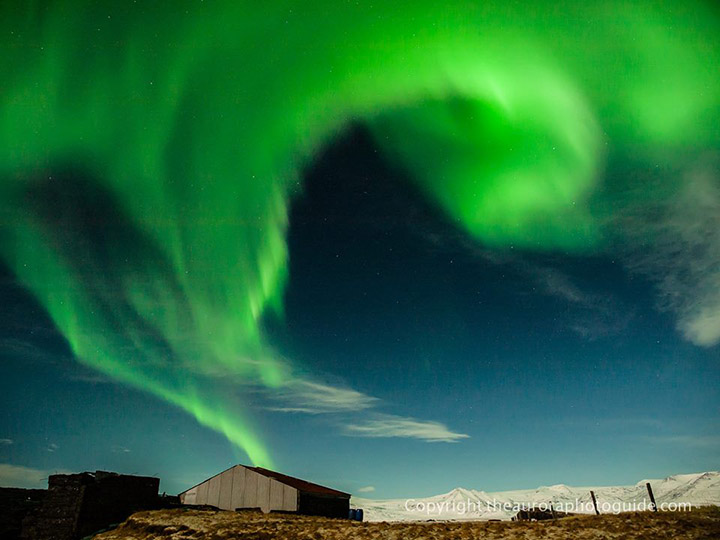
Or how about the image below from Northern Light Catcher which was also captured in Iceland!
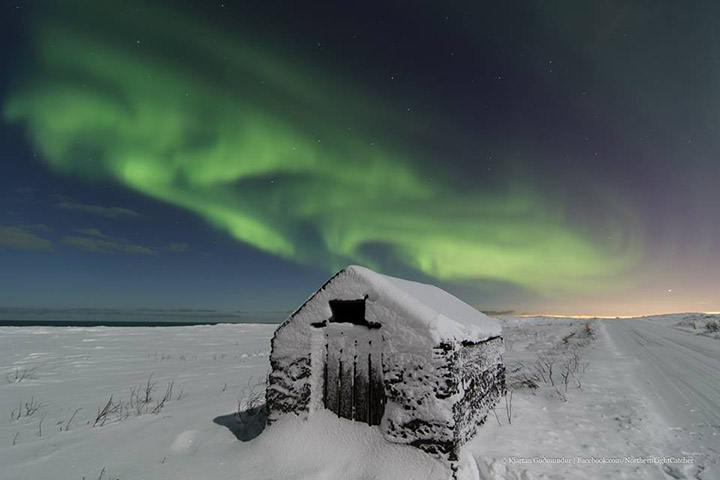
Another coronal hole is now starting to show itself but it will still take a few days before it is in a geo-effective position. In the meantime we expect quiet geomagnetic conditions but at the end of this week or the beginning of next week we could be in for another round of increased auroral activity thanks to this incoming coronal hole.
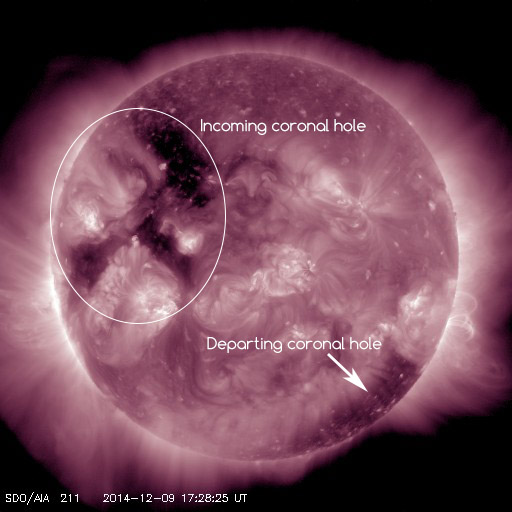
Images: NASA SDO, Salamapaja, The Aurora Photo Guide : Runólfur Hauksson and Northern Light Catcher.
Thank you for reading this article! Did you have any trouble with the technical terms used in this article? Our help section is the place to be where you can find in-depth articles, a FAQ and a list with common abbreviations. Still puzzled? Just post on our forum where we will help you the best we can!
Latest news
Latest forum messages
Support SpaceWeatherLive.com!
A lot of people come to SpaceWeatherLive to follow the Sun's activity or if there is aurora to be seen, but with more traffic comes higher server costs. Consider a donation if you enjoy SpaceWeatherLive so we can keep the website online!

Space weather facts
| Last X-flare | 2025/03/28 | X1.1 |
| Last M-flare | 2025/04/22 | M1.3 |
| Last geomagnetic storm | 2025/04/21 | Kp5+ (G1) |
| Spotless days | |
|---|---|
| Last spotless day | 2022/06/08 |
| Monthly mean Sunspot Number | |
|---|---|
| March 2025 | 134.2 -20.4 |
| April 2025 | 126.5 -7.7 |
| Last 30 days | 124.6 -4.5 |


